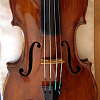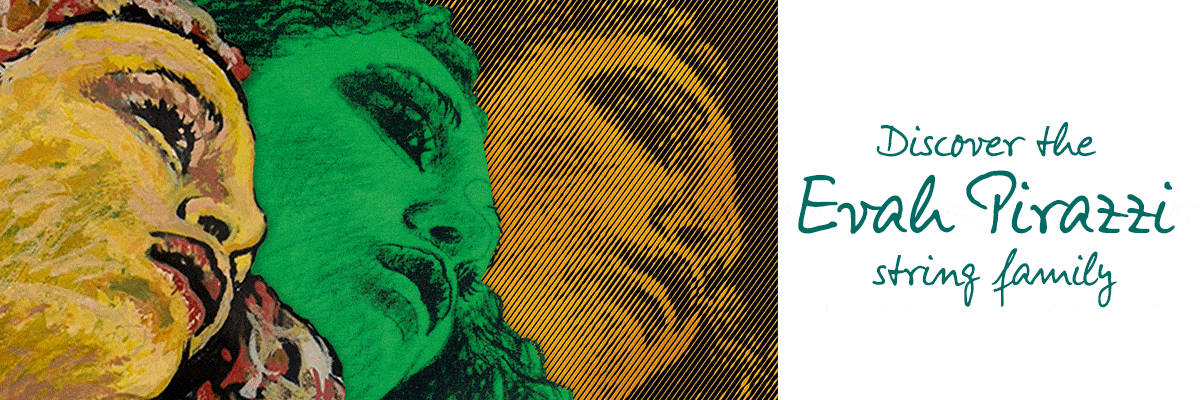
January 2013
V.com weekend vote: Would you take out a loan to purchase a violin?
January 25, 2013 16:19
Good violins can be quite pricey.
The most recent record-sale sum is an extreme example: the undisclosed amount -- somewhere in the vicinity of $15 million -- fetched by the 1741 Vieuxtemps Guarneri del Gesu. Many things came together to make this one violin extremely valuable: its age and provenance, its extremely pristine condition, the famous violinists who played and endorsed it, the famous and long-deceased luthier who made it, the publicity surrounding its sale, etc.
But even a violin that costs a fraction of that price can be a huge investment for a person of average means. The purchase of a good violin may require a loan: from relatives, or from a bank (though instrument loans are hard to get). My instrument loan came from the Musicians Interguild Credit Union, a resource for members of the Los Angeles AFM chapter (I like to tell people about this possibility, as it is a good one.)
I never thought I'd put so much on the line to obtain a good instrument, but then I fell completely in love with the one I bought. I've never regretted it, either.
Would you, have you, taken out a loan to get a violin?
Tweet
V.com weekend vote: What is your favorite musical period?
January 13, 2013 15:07What is your favorite musical period? Mine changes pretty frequently; a moving performance of something from a certain musical period tends to renew my interest in it.
Here are some basic definitions for you (and perhaps your students). Please share what your (current) favorite musical period is, and what makes it your favorite.
For these definitions, I've quoted directly from an excellent article we have on V.com by Liz Lambson, called Classical Music Genres of the Common Practice Periods, which explains three of those periods very well, the Baroque, Classical and Modern periods. I've borrowed her style and added Renaissance and Modern. Feel free to add to (and argue about) these definitions! (Most up-in-the-air is the definition of the "modern" era!)
RENAISSANCE (1400-1600)
Definitive Composer: Giovanni Pierluigi da Palestrina
Other Renaissance Composers: Guillaume Dufay, Josquin des Prez, Johannes Ockeghem, William Byrd, Giovanni Gabrieli, John Dowland
Defining Characteristics: Use of modes, multiple parts, polyphony and independent voices, counterpoint
Performance Style: Use of pre-violin stringed instruments such as the viol (played like a cello, resting between the legs), lute, hurry gurdy
BAROQUE (1600-1750)
Definitive Composer: Johann Sebastian Bach
Other Baroque Composers: Antonio Vivaldi, Arcangelo Corelli, George Frederic Handel, Henry Purcell
Defining Characteristics: Continuous bass line (basso continuo), use of harpsichord and pipe organ, introduction of written works such as cantatas and oratorios, smaller ensembles with limited or no wind and percussion parts
Performance Style: added embellishments and tremelos, little or no vibrato, trills starting on the higher note
CLASSICAL (1750-1820)
Definitive Composer: Wolfgang Amadeus Mozart
Other Classical Composers: Christoph Willibald Gluck, Carl Philipp Emanuel (C.P.E.) Bach, Joseph Haydn, Ludwig van Beethoven (early works)
Defining Characteristics: short melodies and phrases, obvious cadences, larger orchestra than Baroque, music in sonata form, eventual disuse of harpsichord and introduction of piano, quartet music
Performance Style: light and clear articulation, trills starting on the lower not, modest use of vibrato, more dynamic contrast
ROMANTIC (1820-1910)
Definitive Composers: Ludwig Van Beethoven (transitional later works), Pyotr Ilyich Tchaikovsky, Johannes Brahms
Other Romantic Composers: Franz Schubert, Felix Mendelssohn, Frederic Chopin, Robert Schumann, Richard Wagner, Antonin Dvorak, Edward Elgar, Gustav Mahler, Richard Strauss, Sergei Rachmaninoff
Defining Characteristics: reflective of human emotion and expression; a response to social and political movements; rich and song-like melodies; more modulation and key changes; larger orchestra with more winds, brass, and percussion; programme music and symphonic poems
Performance Style: dramatic, expressive, wide vibrato, dramatic and high-contrast articulation and dynamics, rich texture, virtuosic playing, lyrical and song-like phrasing
MODERN (1910-present)
Definitive Composer: Igor Stravinsky, Aaron Copland, Arnold Schoenberg
Other Modern composers: Bela Bartok, Claude Debussy, Dmitri Shostakovich, Leonard Bernstein, Sergei Prokofiev,
Defining Characteristics: impressionism, atonality, dissonance, syncopation, neo-Classicism, neo-Romanticism, new styles, cross-genre experimentation, use of technology, frequently changing meters, minimalism
Performance Style: extremely variable, often experimental, with techniques such as Bartok pizzicato, col legno bowing, aleatoric passages (somewhat improvised and chaotic), unusual annotation, and more.
Tweet
V.com weekend vote: How do you primarily read pitch in music?
January 4, 2013 16:25The act of reading pitches in music seems to work differently in different people's brains.
I've noticed this when teaching, and I've really noticed it when putting together my annual Holiday Sing-Along! Granted, I'm working with some people who sing, others who play the violin, and others who play guitar or piano. A violinist, other instrumentalists and singers usually want a chart; that is, a sheet with all the notes on it. But people who show up with a guitar, or even sit at the piano, might prefer to read a sheet of chords. Sometimes they are even unable to read notes.
Among those who read notes, thinking can also vary, and I suspect this might have to do with the type of pitch a person has. I have relative pitch, and I tend to look at intervals. I've noticed that friends and colleagues with perfect pitch tend to read notes in an almost individual way, as they are often able to hear a pitch by name or sight, without needing reference to other notes.
Beginning violin students often relate written pitches to the fingers they use to play them.
How do you look at written music? If you have a way not represented here, please share!
Tweet
More entries: February 2013 • December 2012
Violinist.com is made possible by...
Dimitri Musafia, Master Maker of Violin and Viola Cases
Johnson String Instrument/Carriage House Violins
Subscribe
Laurie's Books
Discover the best of Violinist.com in these collections of editor Laurie Niles' exclusive interviews.

Violinist.com Interviews Volume 1, with introduction by Hilary Hahn

Violinist.com Interviews Volume 2, with introduction by Rachel Barton Pine






